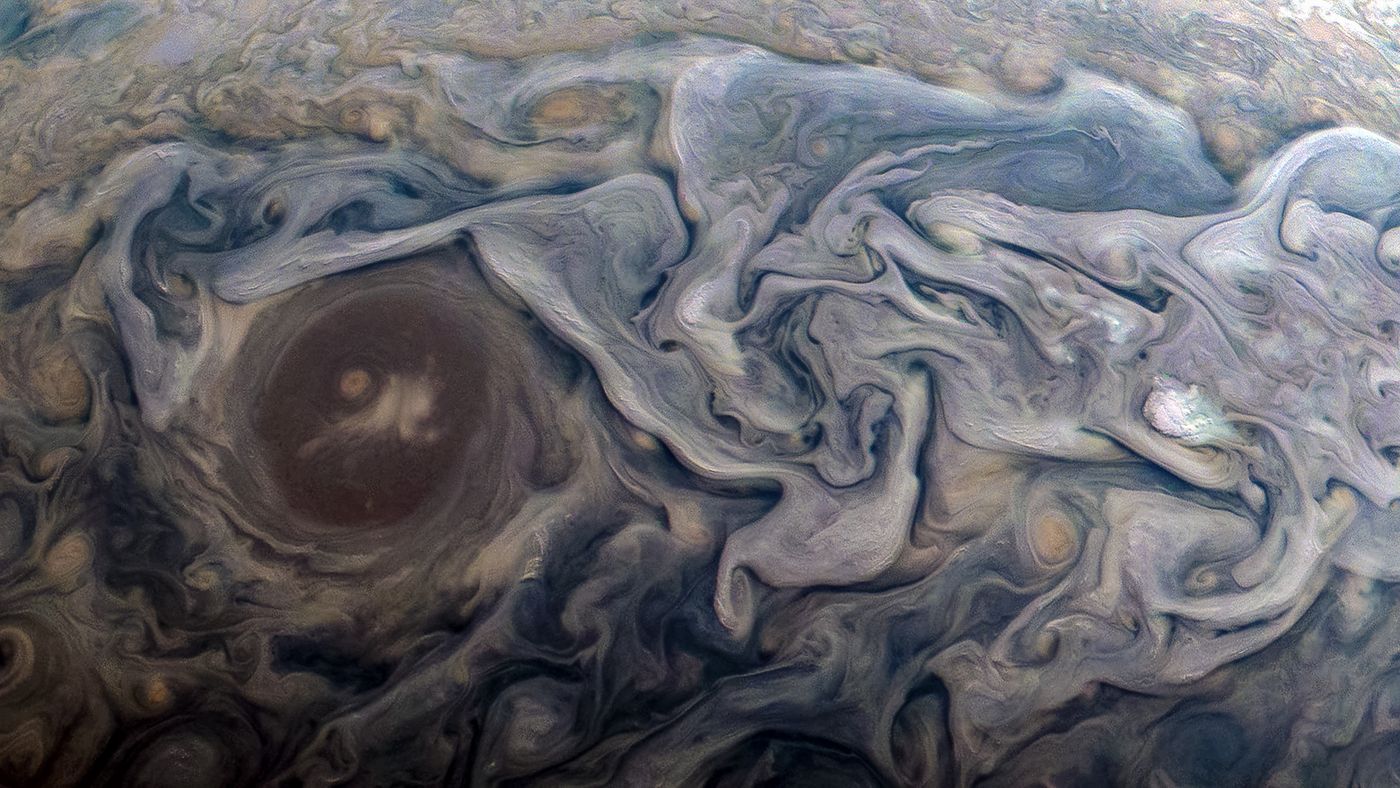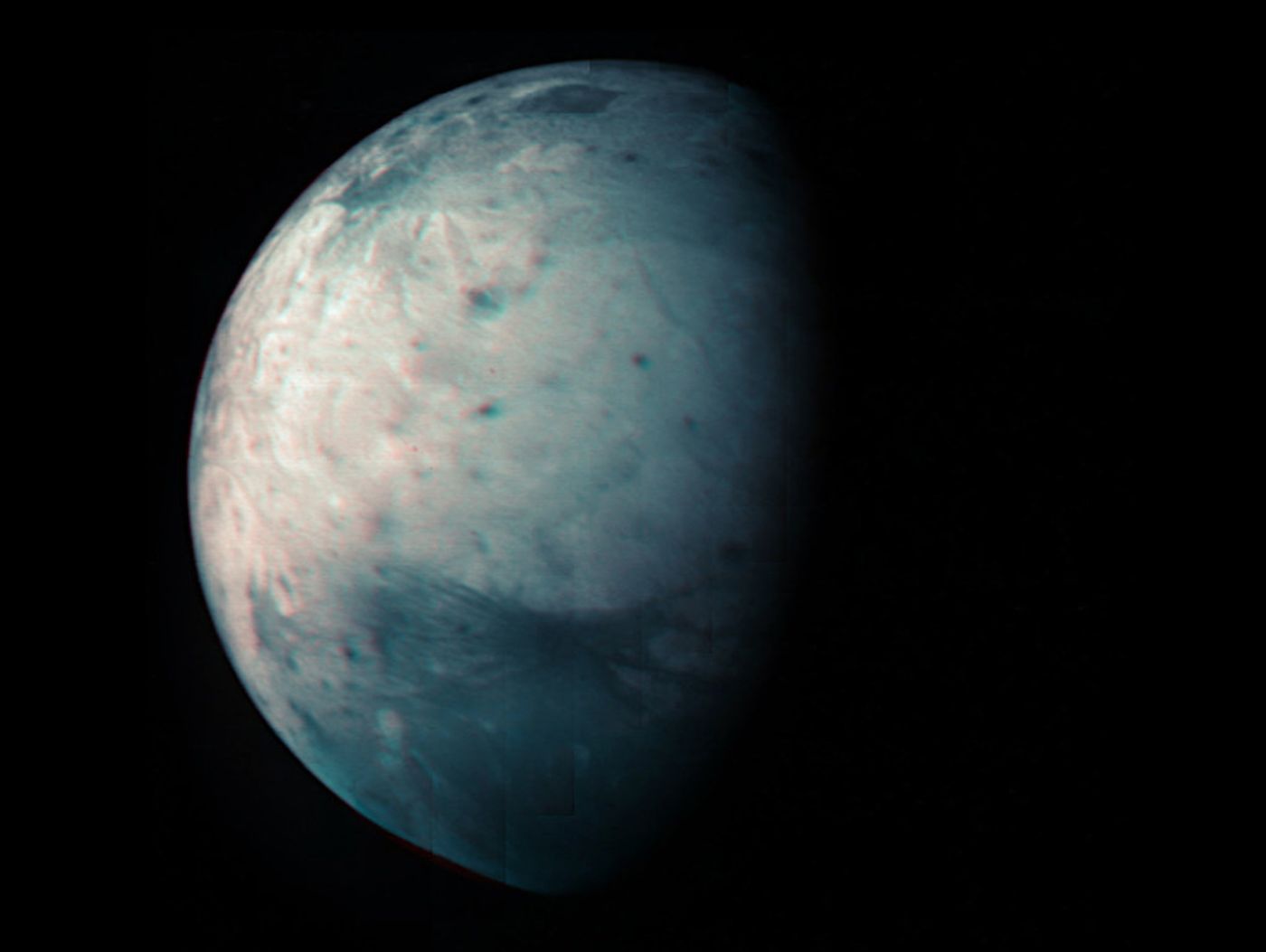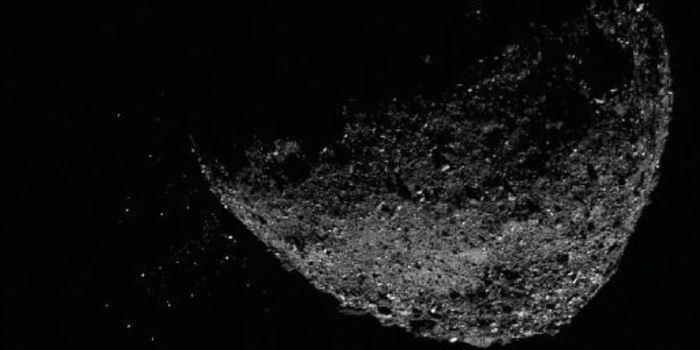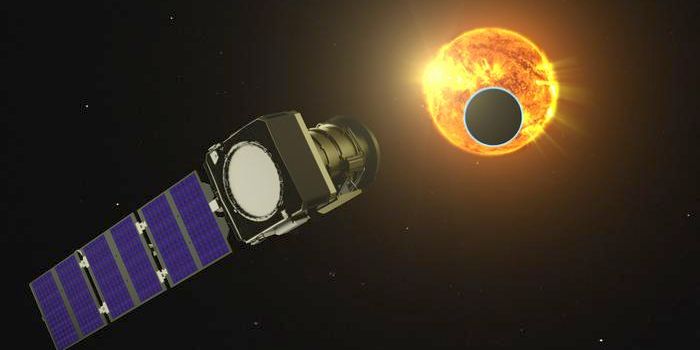'Hear' the Magenetosphere of One of Jupiter's Moons During a Juno Flyby
During a flyby of Ganymede, a moon of Jupiter, the Juno spacecraft made a recording on June 7, 2021. The frequency of the recording was shifted into the audio range so it can be heard. The sound is captured in the video below. When Juno made its closest approach to Ganymede on its 34th trip around Jupiter, it got within 645 miles (1,038 kilometers) of surface of the moon, while moving at a relative velocity of about 41,600 mph (67,000 kph).
The Juno Principal Investigator, Scott Bolton of the Southwest Research Institute, noted that at about the midpoint of the recording, the frequencies move into a higher range, as the craft enters a different part of the Ganymede magnetosphere. Data collected by the magnetometer on Juno has enabled a team led by Jack Connerney at NASA's Goddard Space Flight Center to create a detailed map of Jupiter's magnetic field.
Near the equator of Jupiter is the Great Blue Spot, a magnetic anomaly. Juno's mission has revealed that the Great Blue Spot has moved relative to the interior of Jupiter, at a speed of roughly 2 inches (4 centimeters) per second; it will circle around the planet in around 350 years.
Another well known feature of Jupiter, the Great Red Spot, has been shifting to the West at a much faster speed, and can lap the planet in only about four years.
Though it doesn't seem like Jupiter has much in common with Earth, some see similarities when they look closely. The cyclones that can be observed at the poles of Jupiter reminded researcher Lia Siegelman, a physical oceanographer and postdoctoral fellow at Scripps Institution of Oceanography, of ocean eddies.
"These are especially evident in high-resolution satellite images of vortices in Earth's oceans that are revealed by plankton blooms that act as tracers of the flow," said Siegelman. Geometric vortices arise on Jupiter spontaneously, and persist, suggesting that the configuration of the planet produces these formations.
A deeper understanding of atmospheric patterns on Jupiter could help us learn more about weather on our own planet.
Source: Jet Propulsion Laboratory










